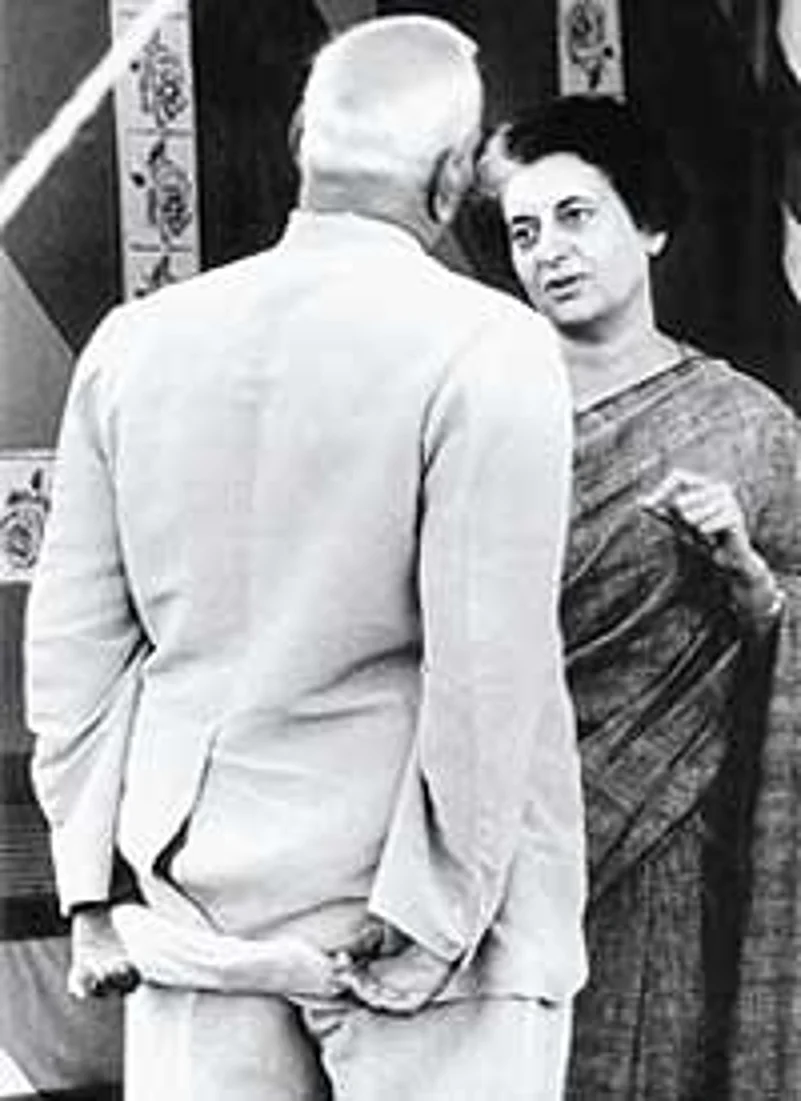Atalji, having run a motley coalition for six years with commendable skill, is still active on the national scene and is highly respected. But who remembers Morarjibhai today? Indira’s name, on the other hand, retains tremendous resonance, evoking reverence among the masses even if many in the chattering classes continue to revile her. For that reason the book’s subtitle, A Lasting Legacy, is apt.
What a delicious irony it is that high praise for Indira should have come—of all people—from theRSS sarsanghchalak K.S. Sudershan! At the same time, the patriarch of the Sangh parivar poured scorn on her illustrious father, Jawaharlal Nehru, unquestionably a taller figure in modern Indian history than her, while she herself is taller than all the 10 prime ministers that have followed her so far, to say nothing of the one preceding her because his tenure was sadly short-lived. However, you can’t expect anything better from backwoodsmen at present deeply troubled also by turmoil within their own ranks, caused—incredibly—by Mohammed Ali Jinnah, wrongly believed to be the founder of Pakistan. The real creator of the country next door was the British Raj, as documents recently declassified by the British government underscore.

The introduction by Inderjit Badhwar says that the book is neither a "gushing tribute" to Indira Gandhi nor an attempt to pronounce judgement on her. It is a depiction, a "photographic traverse that tracks the emotion-laden political and personal journey of a complex (and) enigmatic world leader". Within these parameters, the 14-page introduction is a workman-like sketch of her life and her two innings in power amounting to nearly 15 years. But it does not do full justice to a complex, controversial and compelling leader who completely dominated the national scene for two decades, whether she was in power or out of it.
Regrettably, the brief portraiture contains several errors, including of facts that could have been checked very easily. The worst of these is the assertion that Indira was the "first female to be elected to lead a democratic government". That honour really belongs to Sirimavo Bandaranaike who became the world’s first elected woman premier in Sri Lanka, six years before Indira’s own ascension.
But the high point of the book is the carefully selected, and superbly produced, collection of photographs taken by Raghu Rai through the Indira era, capturing her in myriad moods, in different locales and against diverse backdrops. Once this is said, there is really very little to add. For Raghu is among the greats of photojournalism across the world. His work speaks so well for itself that no one need interrupt it. The present book is his second on Indira Gandhi and a sequel to half-a-dozen other works.
Sixty per cent of the pictures in the book, claim the publishers, have not been publishedbefore. That may well be so. But most of the outstanding photographs (all of Raghu’s work is superb and some superlative) are very well known because they have been seenoften. Altogether, this addition to the huge number of books on her is worthy of both its subject and its creator.
















